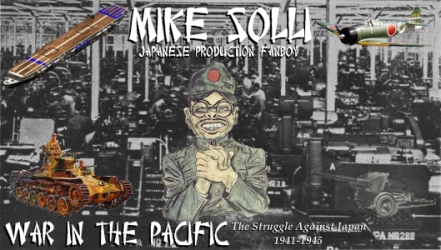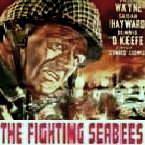Mac Linehan
Posts: 1484
Joined: 12/19/2004
From: Denver Colorado
Status: offline

|
quote:
ORIGINAL: Big B
Would this by chance have been the Battle of Khafji, January 29-30, 1991?
A good friend of mine was in a Marine LAV platoon in that engagement, and the description sounds very familiar..
B
quote:
ORIGINAL: Mac Linehan
...
Note: Just before the first Gulf War, a new mechanic joined me at LAV AT Platoon. His name was SGT Bussy - a very hard working and capable mechanic. SGT Bussy was originally a Marine cook. One day, I asked him how he liked being a mechanic, compared to working as a cook. He explained to me that as a cook, he worked from 0430 until 2100 six days a week; that his new MOS was a piece of cake compared to what he used to do. This was very illuminating to me; beauty is in the eye of the beholder.
We unfortunately lost one LAV – AT too friendly fire during a very confused, close quarter’s night engagement against Iraqi armor. The LAV – AT’s fell back to secondary positions; one of the crews lagged behind and was out of place, forward of the new line. A fellow AT gunner misidentified the vehicle as the enemy and targeted that vehicle. One of my mechanics – PFC Scott Schroeder, was on board and perished with the crew. Interestingly, Sgt. Bussy was originally assigned to the destroyed LAV but was unavailable (I have forgotten why) and Scott was his temporary replacement for that night. May God always care for you and your family, Scott.
Semper Fi –
Mac
B - Just revisited this thread.
I do believe that it was the Battle of Khafji, January 29-30 in 1991; If memory serves correctly. I bought a book years ago, entitled "Into the Storm", the author interviewed (among others) Warrant Officer Nick Vitali (then Sgt. Vitali) who commanded one of the AT sections in that battle. Reading "Into the Storm" gave me many of the details that I was unaware of; as I did not participate directly in the battle. It will help if I find and review the book and verify my memory.
B, the following is an excerpt from a letter I wrote the summer of 2013 to a friend. If I may, Gents, take the liberty and recognize those with whom I served with and made up the 3rd LAV Anti Tank Maintenance Team:
Quote:
Jumping ahead in time, I served in the First Gulf War (1990) as a Maintenance Chief for 24 plus Light Armored Vehicles.
The LAV family of eight wheeled armored fighting vehicles is one of the better investments that the Department of Defense has made with the Tax Payer’s money. The most common variant is the LAV – 25, a reconnaissance vehicle armed with a 25mm Chain Gun.
The 24 vehicles I and my team inherited were the LAV – AT (anti tank) variant, which fired a TOW wire guided missile that was particularly effective against the Bad Guy armor of the day. Unfortunately, for a number of reasons – political and monetary - that particular variant was underused, neglected and rarely fired a missile (which were and still are, very expensive). Therefore, most of the vehicles were, to put it gently, in very bad shape upon arrival at Kuwait, and most definitely not combat ready. This was a critical factor, as our vehicles comprised about one third of the Alliance anti armor capability in Theater for the first five months or so of the campaign. Iraq possessed, by Middle East standards, a large armor force. US Heavy armor – Army M1 Abrams, Marine Corps M60a1’s (the Corps was transitioning to the M1) were being shipped by sea, and that took time.
The LAV family of vehicles was powered by an Allison 6V53T two stroke engine; a very compact installation. The exhaust piping required heat blankets to prevent burning other adjacent components. Upon initial arrival of the vehicles in Saudi Arabia, we systematically went over each vehicle. This included the removal of the heat blankets to visually inspect each exhaust component. What we found was that many of the exhaust piping had rusted through and deteriorated to the point where it was no longer functional, thus Dead Lining the vehicle until a replacement part was installed. A vehicle is considered Dead Lined (non operational) if it can not shoot, move or communicate.
The problem was, that the Head Quarters Marine Corps tracks the status of every combat capable vehicle, and as the dead line list grew, it was flagged at HQMC. Eventually I was told to stop dead lining the vehicles, and make them work until replacement parts arrived. I would emphasize that the intent was not to cover up, but to do whatever it took to keep a critical series of vehicles operational until corrective maintenance could be taken. The good news was that every part on a combat vehicle receives a priority number; in peace time 06 was the highest. In Saudi Arabia it was 02 or 01; eventually parts began to arrive and action was taken.
A second step that I was led to take, was to check the battery condition of each vehicle. The LAV has four batteries in series parallel; the AT version drew the most power-for a number of reasons. I remember taking my small notebook and battery tester, along with Corporal Mohamed Hashim (who worked for me) and systematically testing every battery. The results showed that over 3/4 of the batteries should be replaced. After much thought (and a LOT of prayer), I decided to order and replace every battery plus some extras for spares. This decision, for whatever reason, was questioned at a higher level. My Commanding Officer, Captain Freyda and I enjoyed a very high level of trust and confidence. Captain Freyda, to his credit, stood firm and backed my decision 100 percent. Thank You Sir.
[Note: B- It was after the new batteries arrived and installed that the Battle of Khafji took place.]
Blessed with a strong, supportive commanding officer and an outstanding, very capable Maintenance Team, the vehicles in our care were, over a seven month period, restored to full operational capability. After months of hard work, the ground war began and the Team was broken up into smaller mobile support units during the 100 hour campaign.
We unfortunately lost one LAV – AT too friendly fire during a very confused, close quarter’s night engagement against Iraqi armor. One of my mechanics – Private Scott Schroeder, was on board and perished with the crew. May God always care for you and your family, Scott.
My times are in thy hand: deliver me from the hand of mine enemies, and from them that persecute me.
Make thy face to shine upon thy servant: save me for thy mercies' sake.
Psalms 31:15 and 16
Some months later, after returning to the Marine Corps Base at 29 Palms California, I received an accelerated promotion to Gunnery Sergeant. If one were an infantryman, or perhaps an aviator, recognition and reward for exceptional performance might be in the form of a medal. Because of the Maintenance Team’s performance in restoring badly needed LAV’s to an operational status, under very difficult conditions, I, as team leader, was (among others) recognized and promoted over 400 other Marines. I do not know who submitted the recommendation – there are a whole series of checks and balances – nor have I been told or am expected to ask. Please let me be very clear that it was the combined effort of an exceptionally talented team that met and exceeded all expectations. I was blessed to have been part of this group of remarkable men.
Early in the 20th century, Henry Ford – the originator of the assembly line which revolutionized the manufacturing of automobiles, was in court and asked a very technical question. Mr. Ford’s response was “I do not know the answer to your question; however I surround myself with men who do”. This was the brilliance of his organizational ability; and thus, in a very small way, I attempted to emulate him. I regret to say that I do not remember all of the Team’s names; but I clearly remember Sergeant Sada – a veritable magician when dealing with the LAV – AT Emerson 901 TOW Turret – a particularly complex piece of equipment. Without his, and a number of other’s knowledge and work ethic, the vehicles would not have contributed to the defense of Saudi Arabia and, much later, the offensive into Kuwait.
I am, and remain, in their debt. I am also indebted to Captain of Marines Freda, who took on a very difficult command and gave me his unstinting trust, backing and support while always meeting the Standard of Leadership and Excellence I would expect from a Marine Officer.
“Remember that there is no substitute for performance of duty whether you are a statesman or a fighting man and there must be character and integrity at all times.”
Colonel Chesty Puller USMC
End Excerpt
B - did not mean to get carried away. Could you please tell me your friends name? It has been over 20 years, but it is possible that I may have met him along the way. I will find the book and do some research.
Gents - every one on this forum has been through tough and very challenging times. While in Saudi Arabia during the First Gulf War, I was never in any real personal danger (perhaps the closest was being swarmed by a zillion Iraqi flies - I think they were Republican Guard...<grin>). I do know, that our maintenance team contributed to the repair and reliability of the LAV's (and thus also the fighting ability and safety of the crews) in our care; I am at peace.
I would also respectfully submit that my fellow LAV Maintenance Chief, Greg (LIFER on this forum) had a much more challenging task during his tour in Iraq.
There are, without question, many others who served under far more difficult circumstances and greater danger than I. Thank You all for all that you have done.
"If a person has any greatness in them, it comes to light not in one flamboyant hour, but in the ledger of his daily work".
Beryl Markham
I have a lot of pictures from that time; sooner or later I will buy a scanner and be able to put them on screen.
Sincerely, Mac
< Message edited by Mac Linehan -- 11/23/2014 9:51:19 PM >
_____________________________
LAV-25 2147
|
 Printable Version
Printable Version

















 )
)  I'd have killed someone to fly on those birds!
I'd have killed someone to fly on those birds! 
 New Messages
New Messages No New Messages
No New Messages Hot Topic w/ New Messages
Hot Topic w/ New Messages Hot Topic w/o New Messages
Hot Topic w/o New Messages Locked w/ New Messages
Locked w/ New Messages Locked w/o New Messages
Locked w/o New Messages Post New Thread
Post New Thread